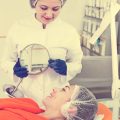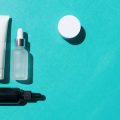Understanding Laser Hair Removal Aftercare
Laser hair removal has become a popular choice across the UK for those seeking long-term reduction of unwanted hair. However, achieving optimal results is not just about the treatment itself—aftercare plays a critical role in ensuring the safety and effectiveness of the procedure. Proper aftercare helps minimise skin irritation, reduces the risk of complications, and supports healthy skin recovery. The British approach to post-treatment routines emphasises gentle care, sun protection, and awareness of our often unpredictable weather conditions. This means taking extra precautions against environmental factors such as cold winds or unexpected sunshine, both of which can impact sensitive skin following laser treatment. By understanding why aftercare matters and following UK-specific guidelines, you can enjoy smoother results while safeguarding your skin’s health.
2. Immediate Steps: What To Do Right After Your Treatment
Proper aftercare within the first 24 to 48 hours is crucial for achieving optimal results following your laser hair removal session. Adhering to British guidelines not only soothes the skin but also minimises the risk of irritation or adverse reactions. Below, you’ll find a professional guide tailored for UK clients, detailing essential steps and recommended pharmacy products to support your recovery.
Soothing Your Skin: The First Priority
Immediately after treatment, your skin may feel sensitive, warm, or slightly swollen—these are normal responses. Begin by gently cooling the treated area using a clean, damp cloth or a cool pack wrapped in a soft towel. Avoid direct ice application as it can aggravate sensitivity.
Recommended British Pharmacy Products
| Product Type | UK Brand Example | Purpose |
|---|---|---|
| Aloe Vera Gel | Holland & Barrett Aloe Vera Gel | Cools and calms irritated skin |
| Fragrance-Free Moisturiser | E45 Cream / Aveeno Daily Moisturising Lotion | Hydrates and restores barrier function |
| Mild Antiseptic Cream (if needed) | Savlon Antiseptic Cream | Protects against minor infection if skin is broken |
Avoiding Irritation: Key Dos and Donts
- Do: Wear loose, breathable clothing to prevent friction over the treated area.
- Do: Use lukewarm water for cleansing and pat dry with a clean towel.
- Don’t: Apply perfumed products, deodorants (for underarm treatments), or makeup to the treated area for at least 24 hours.
- Don’t: Expose the area to direct sunlight or use tanning beds; if necessary, cover with clothing when outdoors.
- Don’t: Engage in hot baths, saunas, steam rooms, or strenuous exercise that causes heavy sweating during the first two days post-treatment.
If Redness Persists or Blistering Occurs
If you notice persistent redness, blistering, or signs of infection such as pus or increasing pain, consult your practitioner or seek advice from your local pharmacist. The NHS website also offers guidance on managing mild skin reactions at home.
By following these immediate aftercare steps using trusted British pharmacy products and professional recommendations, you lay a strong foundation for smooth healing and effective long-term hair reduction results.
![]()
3. Managing Side Effects: Redness, Swelling, and Sensitivity
Following laser hair removal, it’s entirely normal to experience mild redness, swelling, and sensitivity in the treated area. These reactions are common as your skin begins its recovery process. However, recognising what’s typical and knowing when to seek further assistance is crucial for optimal results—especially considering the unique British climate.
Recognising Common Reactions
Most clients will notice mild erythema (redness) and oedema (swelling) immediately after treatment. This usually subsides within 24 to 48 hours. The skin may feel warm or tender to touch, similar to a mild sunburn. In the UK, with its often cool and damp weather, these effects can sometimes linger slightly longer, particularly if you have sensitive or fair skin.
When to Seek Professional Help
While mild discomfort is expected, you should contact your practitioner if you notice any of the following:
- Redness or swelling persisting beyond 72 hours
- Blistering or signs of infection (such as pus or increasing pain)
- Severe itching or allergic-type reactions
Your clinic can provide tailored advice or prescribe topical treatments if necessary.
Trusted Methods for Relief in the UK Climate
To soothe post-laser skin, apply a cool compress—using chilled water rather than ice directly—to reduce inflammation. Opt for fragrance-free moisturisers such as aloe vera gel or gentle emollients recommended by UK dermatologists. Avoid hot showers, saunas, and steam rooms for at least 48 hours post-treatment. Since British weather often means lower UV exposure, it’s still vital to apply broad-spectrum SPF if venturing outdoors, as even cloudy days can cause sensitivity in treated areas. Lastly, wear loose-fitting cotton clothing to minimise friction and help your skin breathe during recovery.
4. Sun Protection: The British Approach
Proper sun protection is a cornerstone of laser hair removal aftercare, and in the UK, it demands a tailored strategy due to the countrys variable climate and UV exposure. Even though Britain is known for its cloudy skies and milder temperatures, UV rays can still cause pigmentation issues post-laser treatment. Understanding how to protect your skin effectively is essential for optimal results.
Guidance on UV Protection Post-Laser
Immediately after your laser session, your skin will be more sensitive to sunlight and artificial UV sources. Its crucial to avoid direct sun exposure on the treated areas for at least two weeks. If you need to go outdoors, wear protective clothing such as wide-brimmed hats, long sleeves, and sunglasses. Indoor tanning beds are strictly discouraged as they can increase the risk of burns and hyperpigmentation.
Typical Weather Considerations in Britain
The unpredictable British weather might make you underestimate the need for sun protection, but up to 80% of UV rays can penetrate clouds. This means that even on overcast days, there is still a significant risk of UV damage, especially during late spring and summer months when UV levels rise. Its also important to note that reflective surfaces like water or wet pavements can intensify UV exposure regardless of the temperature.
Effective SPF Recommendations
| SPF Level | Suitability | Recommended Usage |
|---|---|---|
| SPF 30 | Moderate protection for everyday use in typical British weather | Daily application if spending short periods outdoors |
| SPF 50+ | High protection ideal post-laser or during high UV index days | Mandatory for at least two weeks post-treatment or prolonged outdoor activities |
Select broad-spectrum sunscreens that shield against both UVA and UVB rays. Reapply every two hours when outside, especially after sweating or getting wet. For added reassurance, opt for mineral-based sunscreens containing zinc oxide or titanium dioxide, which are gentle on sensitised skin following laser procedures.
The Key Takeaway for British Patients
No matter the season or forecast, consistent and effective sun protection is vital after laser hair removal. By adopting these British-specific guidelines, you not only prevent unwanted pigmentation but also ensure lasting, flawless results from your treatment.
5. Dos and Don’ts: Key Aftercare Practices
Adhering to the correct aftercare routine is absolutely vital for achieving the best results following your laser hair removal treatment. Here, we provide clear, British-centric advice on what you should—and should not—do in the days and weeks after your session.
Bathing and Showering
Do: Opt for lukewarm showers for at least 48 hours post-treatment. Use a gentle, fragrance-free cleanser to avoid irritating the skin.
Don’t: Avoid hot baths, steam rooms, or saunas during this period, as excessive heat can exacerbate redness and prolong healing.
Exercise and Physical Activity
Do: Take a break from strenuous exercise for at least 24–48 hours after your appointment. Gentle walks around your local park are acceptable if you feel comfortable.
Don’t: Refrain from high-intensity workouts, swimming pools, or activities that induce heavy sweating, as perspiration can increase sensitivity and risk of infection.
Makeup and Skincare Products
Do: If your treatment area is on the face, choose mineral-based makeup if absolutely necessary, but ideally let your skin breathe for at least 24 hours. Stick to simple moisturisers such as E45 or Aveeno.
Don’t: Steer clear of exfoliating products, retinoids, or any skincare containing acids or strong fragrances until the treated area has fully calmed down.
Clothing Choices
Do: Dress in loose-fitting cotton clothing, especially over treated areas. This allows airflow and minimises friction—a key consideration given Britain’s variable climate.
Don’t: Avoid tight jeans, leggings, or synthetic fabrics which may trap heat and irritate sensitive skin post-laser. Remember to check weather forecasts; in hot spells, keep cool and covered.
A Final Word on Aftercare
Your commitment to these dos and don’ts will not only ensure optimal healing but also help you achieve lasting results from your laser hair removal treatment. Following these British guidelines will see you well on your way to smoother skin with confidence.
6. Follow-Up and Professional Advice
After your initial laser hair removal session, adhering to a proper follow-up schedule is crucial for achieving the best results. Most clients in the UK require multiple sessions, typically spaced 4 to 6 weeks apart, depending on hair growth cycles and the area treated. It’s essential to work with your practitioner to establish a personalised treatment plan that fits your needs and lifestyle.
Scheduling Future Sessions
Laser hair removal works most effectively during the active growth phase of hair follicles. As such, timely follow-up appointments are key. Missing or delaying sessions may reduce overall efficacy and prolong the process. Your clinic should provide reminders and guidance on optimal timing based on your progress and skin response.
When to Consult Your Practitioner
If you experience any unexpected side effects—such as prolonged redness, swelling, blistering, or pigmentation changes—it’s important to contact your practitioner promptly. Early intervention can help manage minor concerns before they become more serious. Additionally, if you notice uneven results or have questions about aftercare products, don’t hesitate to seek professional advice.
The Importance of Local Expertise
Choosing a reputable British clinic ensures that your treatment is delivered in line with UK regulations and standards. Practitioners trained in local protocols are familiar with common skin types and cultural considerations relevant to the British population. Their expertise not only minimises risks but also maximises your satisfaction with the final outcome. Always ensure your chosen provider is qualified, insured, and experienced in laser hair removal techniques suitable for your skin type.


